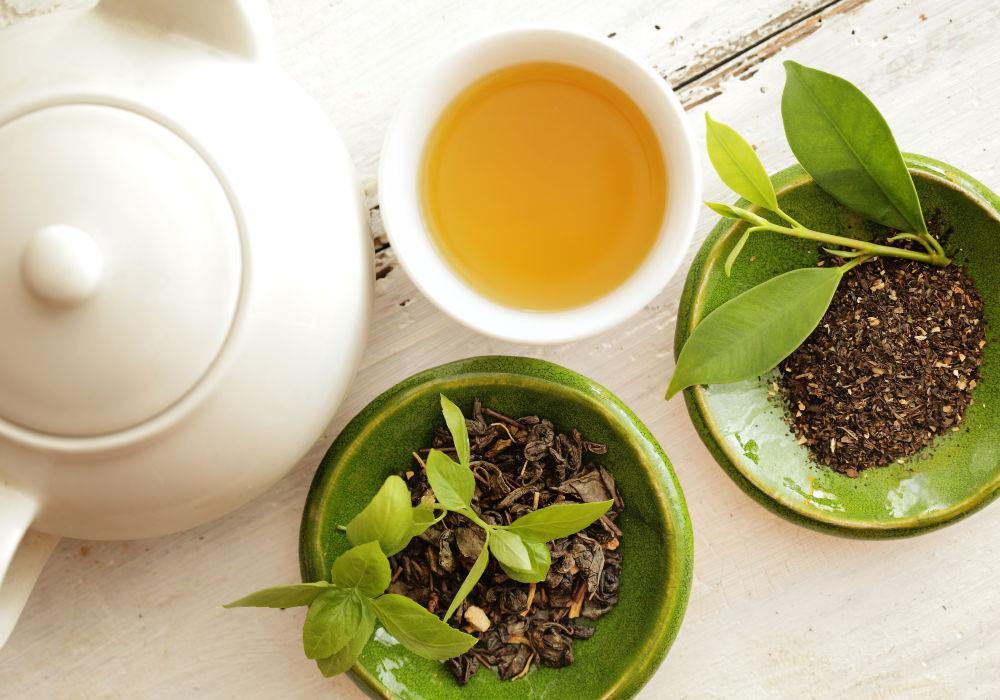
Polyphenols, a Family of Extractives
Polyphenols, a family of extractives with various biological properties
Polyphenols are compounds unique to the plant kingdom. We find them in tea, vegetables, fruit, and also in trees!
A- Their Nature is Defined by Their Molecular Structure…
All these molecules show commonality: the presence of at least one aromatic cycle of 6 carbons (phenol), itself bearer of one or more hydroxyl functions (OH). More than 8 000 natural compounds fitting those structural criteria have been isolated and identified [1]. They are members of various classes: coumarins, lignans, stilbenes, flavonoids, phenolic acids, tannins, xanthones, quinones, etc. These molecules go from monomer to polymer and include different complexes. This great structural diversity explains their rich range of physiochemical and biological properties, mainly due to high chemical reactivity (an ease in the creation links with other molecules and the possibility to complex with metals like iron and copper). Their ability to react with cell proteins is an important aspect of their biological potential. They can thus act as inhibitors or activators for numerous cellular enzymes.
B- Polyphenols, Issued From the Secondary Metabolism of the Plant
Coming from the secondary metabolism, polyphenols are therefore not synthesized priorly and their effects on the plant environment are very complex. Indeed, these compounds are a mechanism to combat potential predators or competitors; they are produced by the plant in strong concentration as a response to pathogenic attacks[2],[3] . Thus, they play an important role in the natural resistance of certain species, thanks to their various proprieties [4],[5] such as their capacity to scavenge free radicals (powerful antioxidants), their ability to block enzymatic processes as well as their fungicidal activity[6],[7]. Research has also shown that polyphenols (phenolic acid, condensed tannins, quinones and flavonoids) are responsible for color formation in wood, since they present chromophoric groups able to absorb visible light [8],[9].
C- Polyphenols and Their Beneficial Effects on Health …
Polyphenolic compounds are generating increasing interest from nutritionists, the food industry and consumers [10]. They are responsible for browning and are responsible for astringent and bitter sensations. Furthermore, as aromatic and colored molecules, polyphenols play a major role on the organoleptic characteristics of many of products through their antiseptic, antibacterial and anti-fungicidal properties[11] , [12], [13], [14].
They are the most abundant antioxidants found in food as we consume about 1g per day, almost ten times more than vitamin C and 100 times more than vitamin E or carotenoids. They can have an effect on the conservation of products, specifically in cosmetics[15], food and pharmaceuticals; in all these cases, conservation of the product must be optimal throughout its life cycle. Polyphenols neutralize free radicals and their antioxidant or anti-inflammatory properties play a role in the prevention of many pathologies including oxidative stress and the aging of cells, cardiovascular or degenerative disease, osteoporosis, cancer, arthritis, type II diabetes, etc. [16] , [17],[18], [19], [20] In the food industry, the addition of natural antioxidants is relatively new. Since 1980, natural antioxidants became an alternative to synthetic antioxidants whose harmlessness has been put into question in both human and animal nutrition [21]. The trend is irreversible: antioxidants derived from natural origins are much preferred by consumers.
D- Polyphenols in Your Everyday Life, Common Applications…
Polyphenols are the active ingredients in many medicines. For example, Asprin base salicylic acid, rutosides (rutin), quercetin flavonoid glycoside (quercetin -3-rutinoside) isolated from many plants (eucalyptus, buckwheat, sophora) used in vein and capillary problems and ginkgo extract (Ginkgo biloba) whose active substance EGb 761 is rich in polyphenolic compounds, mostly in flavonol glycosides (24 % of the extract).
[1] Triaud, J. (1998) Polyphenols 96: 18th International Conference on Polyphenols, Bordeaux.
[2] Hart J.H. (1981) Role of Phytostilbenes in Decay and Disease Resistance. Annual Review of Phytopathology 19: 437-458.
[3] Woodward S. and Pearce R.B. (1988) The role of stilbenes in resistance of Sitka spruce (Picea sitchensis (Bong.) Carr.) to entry of fungal pathogens. Physiological and Molecular Plant Pathology 33(1): 127-149.
[4] Royer M. (2008) Les molécules responsables de la stabilité des bois: cas des bois tropicaux de Guyane Française.Unité Mixte de Recherche Ecologie des Forêts de Guyane (UMR ECOFOG), Université des Antilles et de la Guyane, Cayenne, pp. 242.
[5] Aloui F., Ayadi N., Charrier F. and Charrier B., 2004. Durability of European oak (Quercus petraea and Quercus robur) against white rot fungi (Coriolus versicolor): relations with phenol extractives. Holz Roh Werkst 62(4): 286-290.
[6] Schultz P. and Darrel D.N. (2000) Naturally durable heartwood: evidence for a proposed dual defensive function of the extractives. Phytochemistry 54: 47-52.
[7] Schultz T.P. and Nicholas D.D. (2002) Development of environmentally-benign wood preservatives based on the combination of organic biocides with antioxidants and metal chelators. Phytochemistry 61(5): 555-560.
[8] Dellus V., Mila I., Scalbert A., Menard C., Michon V. and Herve du Penhoat C.L.M. (1997) Douglas-fir polyphenols and heartwood formation. Phytochemistry 45(8): 1573-1578.
[9] Johansson C.I., Saddler J.N. and Beatson R.P. (2000) Characterization of the Polyphenolics related to the colour of Western Red Cedar (Thuja plicata Donn.) heartwood. Holzforschung 54(3): 246-254.
[10] Stevanovic T., Diouf P.N. and Garcia-Perez M.E., (2009). Bioactive polyphenols from healthy diets and forest biomass. Current Nutrition and Food Science 5(4): 264-295.
[11] Amarowicz R., Dykes G.A. and Pegg R.B. (2008). Antibacterial activity of tannin constituents from Phaseolus vulgaris, Fagoypyrum esculentum, Corylus avellana and Juglans nigra. Fitoterapia 79(3): 217-219.
[12] Aslam S.N., Stevenson P.C., Kokubun T. and Hall D.R., (2006). Antibacterial and antifungal activity of cicerfuran and related 2-arylbenzofurans and stilbenes Microbiology research 164(2): 191-195.
[13] Bafi-Yebo N.F.A., Arnason J.T., Baker J. and Smith M.L. (2005) Antifungal constituents of Northern prickly ash, Zanthoxylum americanum Mill. Phytomedicine 12 370–377.
[14] Fukai T., Kaitou K. and Terada S. (2005). Antimicrobial activity of 2-arylbenzofurans fromMorus species against methicillin-resistant Staphylococcus aureus. Fitoterapia 76: 708-711.
[15] Arct J. and Pytkowska K. (2008) Flavonoids as components of biologically active cosmeceuticals. Clinics in Dermatology 26(4): 347-357.
[16] Federico A, Morgillo F, Tuccillo C, Ciardiello F and Loguercio C. (2007) Chronic inflammation and oxidative stress in human carcinogenesis. International Journal of Cancer 121(11): 2381-2386.
[17] Ammar R.B., Bhouri W., Sghaier M.B., Boubaker J., Skandrani I., Neffati A., Bouhlel I., Kilani S., Mariotte A.-M., Chekir-Ghedira L., Dijoux-Franca M.-G. and Ghedira K. (2009) Antioxidant and free radical-scavenging properties of three flavonoids isolated from the leaves of Rhamnus alaternus L. (Rhamnaceae) : A structure-activity relationship study. Food Chemistry 116(1): 258-264.
[18] Atmani D., Chaher N., Berboucha M., Ayouni K., Lounis H., Boudaoud H., Debbache N. and Atmani D., (2009) Antioxidant capacity and phenol content of selected Algerian medicinal plants. Food Chemistry 112(2): 303-309.
[19] Goetz P. (2007) Phytothérapie du diabète. Phytothérapie 5: 212-217.
[20] Halliwell B. (1996) Antioxidants in human health and disease. Annual Review of Nutrition, pp. 33-50.
[21] Moure A., Cruz J.M., Franco D., Manuel Domínguez J., Sineiro J., Domínguez H., Núñez M.J. and Carlos Parajó J. (2001). Natural antioxidants from residual sources. Food Chemistry 72(2): 145-171.





